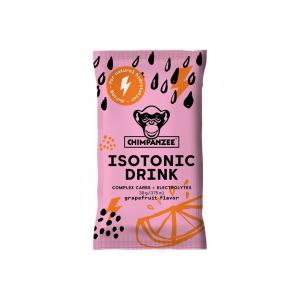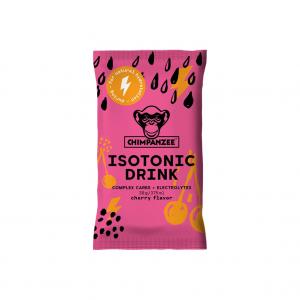
How Glucose-Fructose Syrup Affects Health

Glucose-Fructose Syrup
Glucose-fructose syrup (GFS) is one of the most debated sweeteners in modern nutrition. It often finds itself at the center of discussions about the impact of food on health, particularly in relation to obesity, diabetes, and other lifestyle diseases. This sweet syrup, commonly used in the food industry, is considered a cheap alternative to traditional sugar. But is it really as dangerous as often claimed? And is glucose-fructose syrup worse than regular sugar? Let's take a closer look at this sweetener.
What is Glucose-Fructose Syrup and How is it Made?
Glucose-fructose syrup is a sweetener made from corn starch. The production process involves hydrolysis, during which the starch is broken down into glucose. Subsequently, part of the glucose is enzymatically converted into fructose, which increases the sweetness of the syrup. The final product contains a mixture of glucose and fructose in varying ratios. Depending on the fructose content, the syrup is labeled as glucose-fructose if fructose does not exceed 50%, or as fructose-glucose syrup if the fructose content exceeds 50%.
GFS has become popular due to its low cost, easy availability, and advantageous properties it provides in food production. The syrup improves the texture, consistency, and shelf-life of products, which is a significant advantage for food companies. Therefore, it can be found in a wide range of foods, from soft drinks and juices, to baked goods and cereals, to various sweets, sauces, and dairy products.
Try our natural products
The Impact of Glucose-Fructose Syrup on Health
One of the main reasons why glucose-fructose syrup is often in the spotlight is its potential negative impact on health. Critics argue that high fructose intake can lead to a range of health issues, such as obesity, insulin resistance, non-alcoholic fatty liver disease (NAFLD), and other metabolic disorders.
Fructose, unlike glucose, is primarily metabolized in the liver, where excessive intake can lead to increased fat production. This process can result in fat accumulation in the liver, increasing the risk of developing NAFLD. Furthermore, fructose does not bind to insulin like glucose, which means that it does not create a feeling of fullness in the same way. This can lead to higher calorie intake and subsequent weight gain.
On the other hand, it should be noted that most studies showing the negative effects of glucose-fructose syrup examine the effects of very high doses of fructose that far exceed typical consumption. When consumed in normal amounts, it is unclear whether GFS is significantly worse than regular sugar.
What is the Difference Between Glucose-Fructose Syrup and Sugar?
Sugar, or sucrose, is a disaccharide composed of one molecule of glucose and one molecule of fructose. During digestion, sucrose is broken down into these two components, which are then absorbed into the bloodstream. Glucose-fructose syrup, as the name suggests, also contains glucose and fructose, but these molecules are present in the syrup in a free form, not bound as in sucrose.
The key difference between these two sweeteners is the ratio of glucose to fructose. While sucrose has a fixed 50:50 ratio, the ratio in GFS can vary depending on the specific type of syrup. Some forms of GFS may contain a higher proportion of fructose (e.g., 55% fructose and 45% glucose), which could theoretically lead to higher fructose intake when consuming the same amount of sweetener.
However, it is important to realize that both sweeteners contain the same amount of calories and their metabolism in the body is similar in many ways. The critical factor is therefore the amount we consume, not the mere presence of glucose-fructose syrup or sugar in the diet.
Try our natural products
Glucose-Fructose Syrup in the Context of Modern Nutrition
Currently, there is a common opinion in the media and among nutrition experts that the intake of added sugars should be reduced, whether in the form of sugar or glucose-fructose syrup. The World Health Organization (WHO) recommends limiting added sugar intake to less than 10% of total daily energy intake, which corresponds to approximately 50 grams of sugar for an average adult with normal energy expenditure.
This recommendation is based on growing evidence that excessive consumption of added sugars contributes to the rise of obesity, type 2 diabetes, and other health problems. Given that glucose-fructose syrup is found in many processed foods, it is easy to exceed this recommended daily sugar allowance. Therefore, it is important to pay attention to food labels and be aware of how much sugar and glucose-fructose syrup we consume daily.
Glucose-fructose syrup is often criticized for its potential negative impact on health, but it is important to realize that most of these concerns stem from the excessive consumption of sweeteners in general, not just GFS. When consumed normally, glucose-fructose syrup is not significantly different from sugar, and its health risks are comparable.
If you are trying to maintain a healthy weight and reduce the risk of metabolic disorders, the key is to monitor the total intake of added sugars in your diet. This includes both glucose-fructose syrup and regular sugar. In modern times, where it is easy to consume an excess of sweeteners through processed foods, caution in food selection and a mindful approach to eating is essential.
Glucose-fructose syrup is not necessarily worse than sugar, but excessive consumption, like that of any sweetener, can lead to health problems. Maintaining a balance in the intake of sweet foods and overall reduction of added sugars in the diet can be key to better health and the prevention of many lifestyle diseases.








